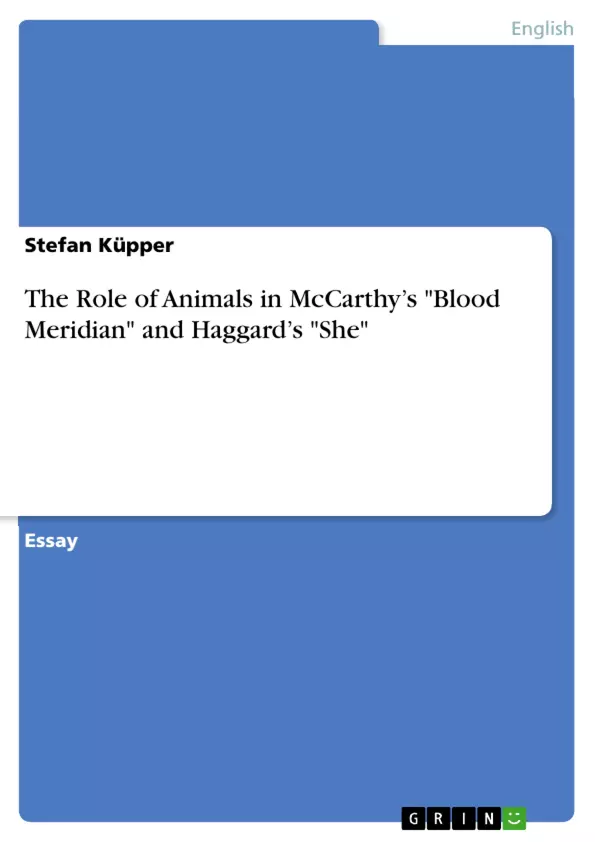British colonial adventurers commonly paid respect to the unfamiliar fauna within the vast territories of the British colonies. The more countries they explored, the more different kinds of unknown animals they encountered. Nevertheless, the role which animals played in the colonies and their relation to human beings was far more complex. There were not only the feral predators which were regarded as a threat to cattle and people. Principally, pack animals like horses or mules were more than important to make the survival of humans in these hostile environments possible. Although white men were dependent on animals, they mostly did not appreciate their amenities. A striking example was the almost extinction of the bison in the American Mid-West territories during the 19th century – especially the history of the natives is closely connected to this phenomenon. In contrast to the white men, native tribes practically valued all sorts of animals in every part of the world because they cultivated symbiotic relations (the common approach to life was living close to nature). The interrelation between landscape, animals and humans was supposed to be a complex challenge for all of them.
Inhaltsverzeichnis (Table of Contents)
- The Role of Animals in McCarthy's Blood Meridian and Haggard's She
- The Importance of Animals in a Hostile Environment
- Horses in Blood Meridian
- The Native American Perspective
- The White Man's Attitude Towards Animals
- Animals in the Landscape
- Humans and Animals - A Complex Relationship
Zielsetzung und Themenschwerpunkte (Objectives and Key Themes)
This essay explores the complex relationship between humans and animals in two literary works: Cormac McCarthy's Blood Meridian and H. Rider Haggard's She. By analyzing the role of animals in both novels, the essay aims to shed light on the historical context of colonial expansion and the attitudes towards the natural world prevalent in the 19th century.
- The importance of animals in hostile environments
- The contrasting attitudes of white men and indigenous peoples towards animals
- The use of animals as symbols of savagery and displacement
- The blurring of boundaries between human and animal
- The impact of colonialism on both humans and animals
Zusammenfassung der Kapitel (Chapter Summaries)
The first part of the essay examines the importance of animals in a hostile environment, focusing on the role of horses in Blood Meridian. The essay then explores the contrasting perspectives of white men and native tribes on the relationship between humans and animals. It highlights how Native Americans viewed animals as equals and lived in harmony with the natural world, while white colonists often exploited and mistreated animals.
The second part of the essay delves into the white man's attitude towards animals, specifically addressing the disdain and cruelty displayed by the characters in Blood Meridian and She. The essay analyzes the destructive impact of excessive hunting and the use of animals as mere objects for sport.
The essay concludes by discussing the use of animals in the landscape to create a sense of displacement and danger. It examines how both novels depict the interplay between humans and animals within a hostile environment, blurring the lines between the two and highlighting the survival instincts that emerge in the face of danger.
Schlüsselwörter (Keywords)
The essay explores the following key topics: animals in literature, colonialism, nature, savagery, displacement, human-animal relationships, indigenous perspectives, Blood Meridian, She, Cormac McCarthy, H. Rider Haggard.
- Quote paper
- Stefan Küpper (Author), 2007, The Role of Animals in McCarthy’s "Blood Meridian" and Haggard’s "She", Munich, GRIN Verlag, https://www.grin.com/document/145336



